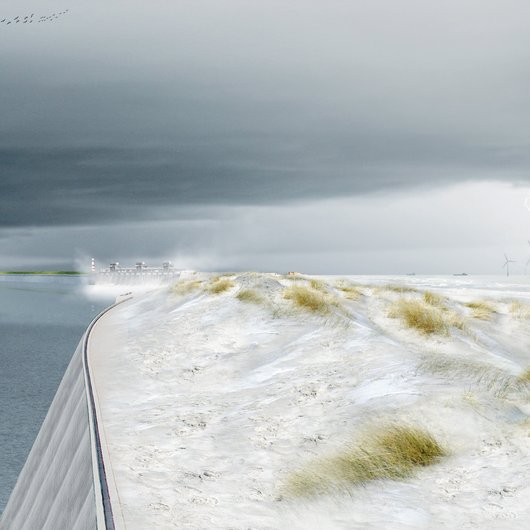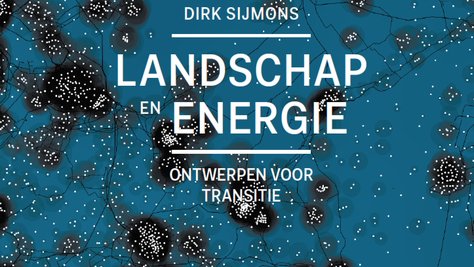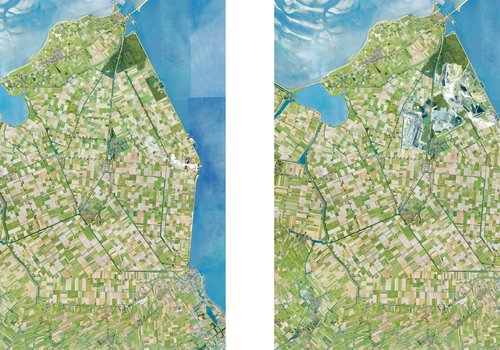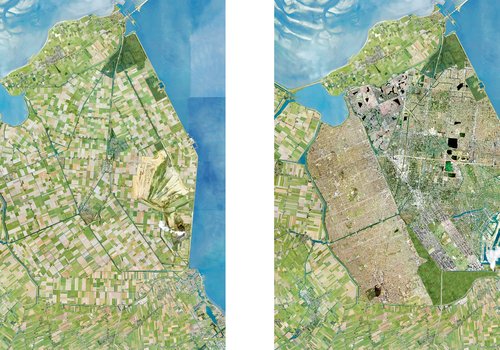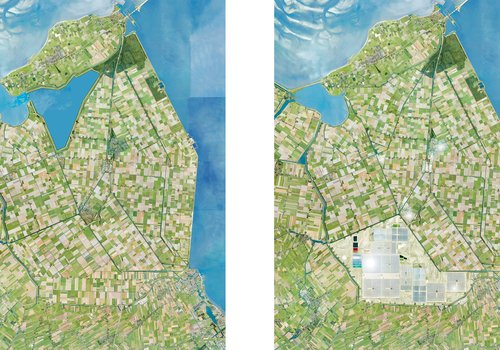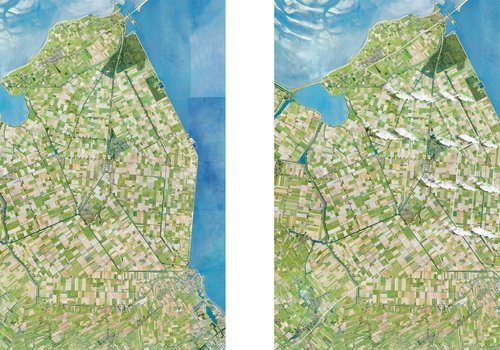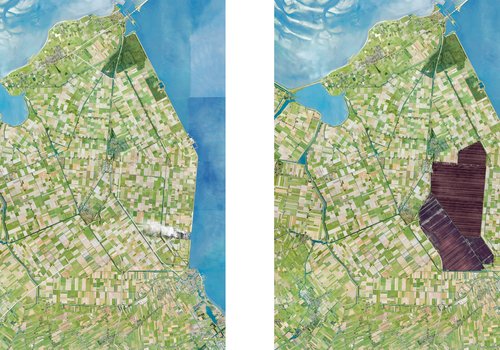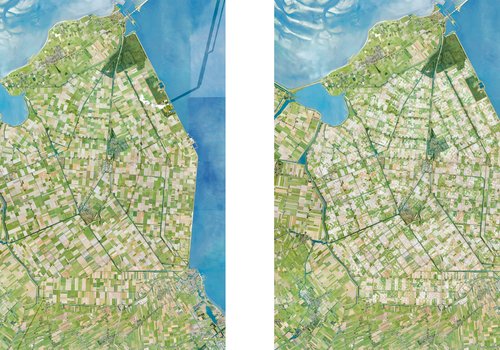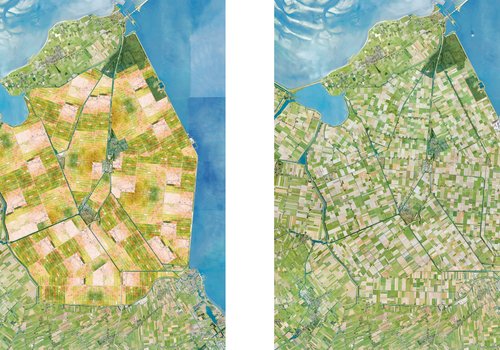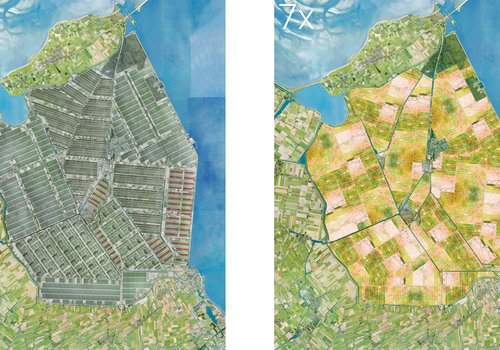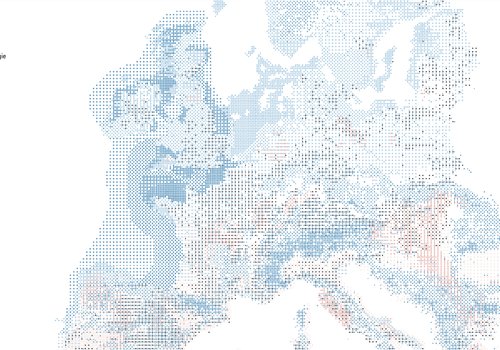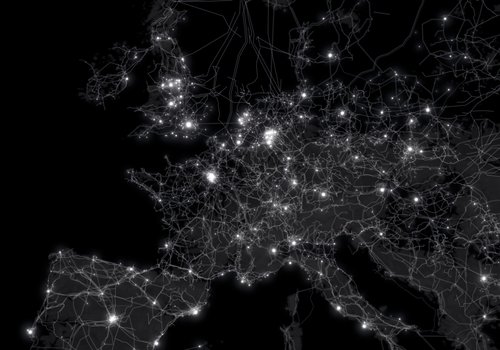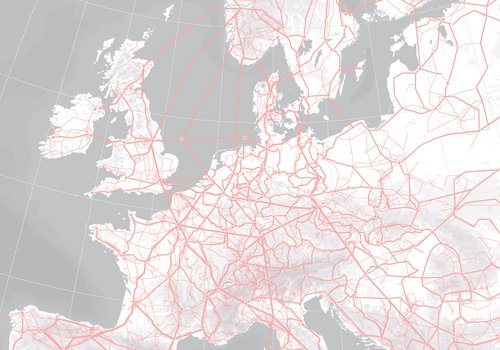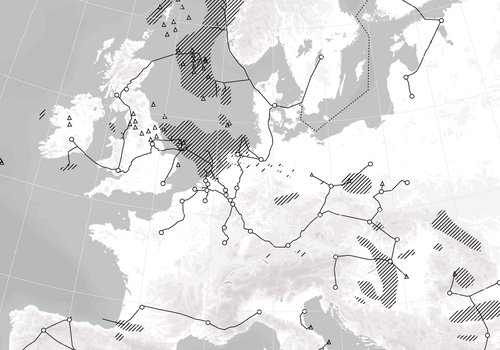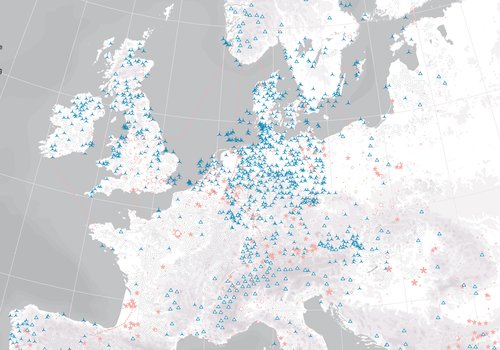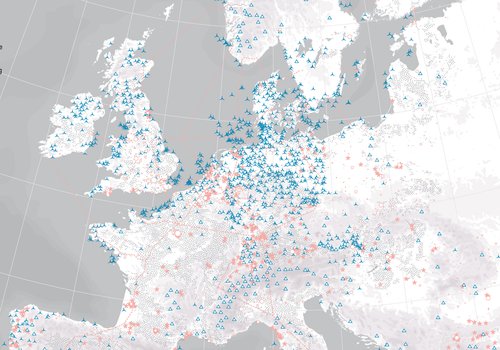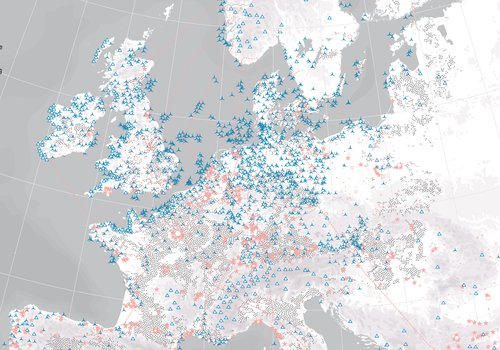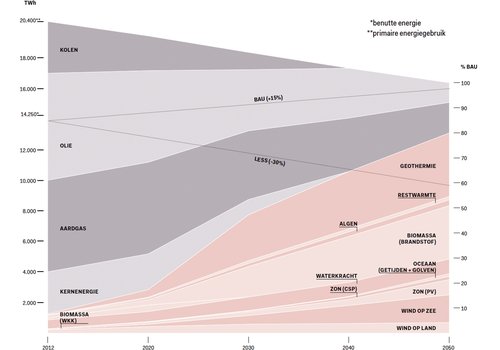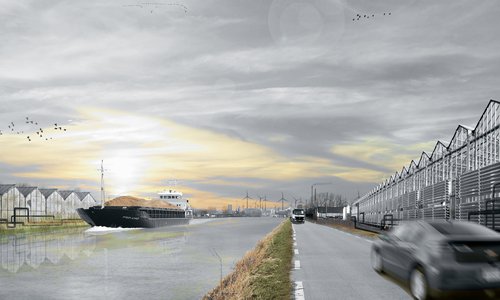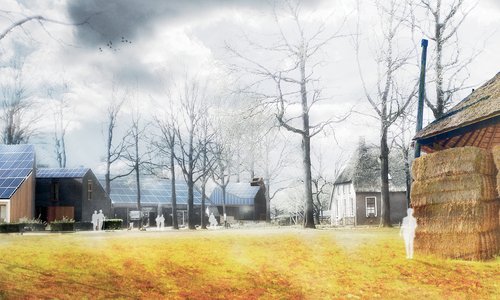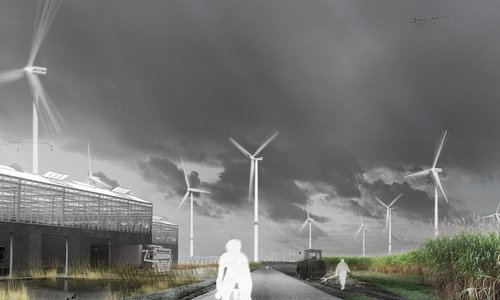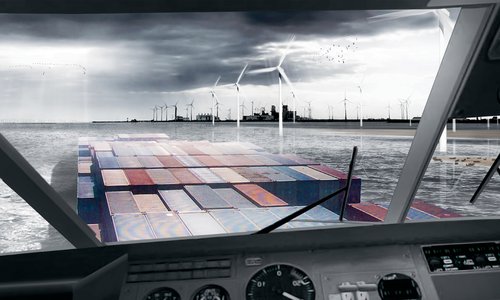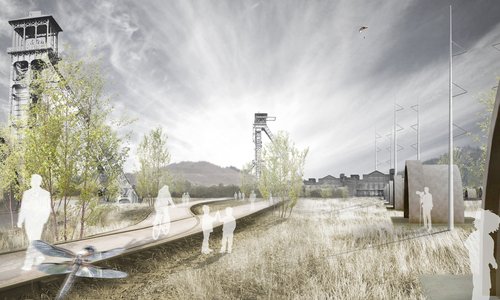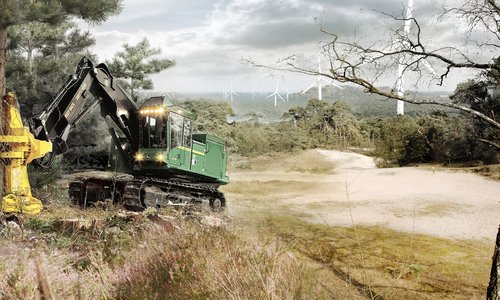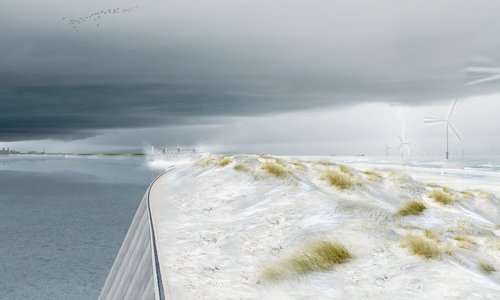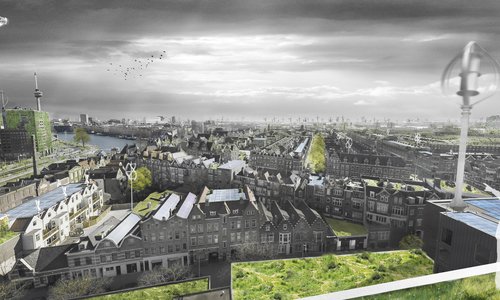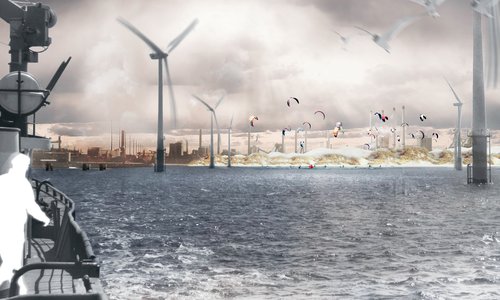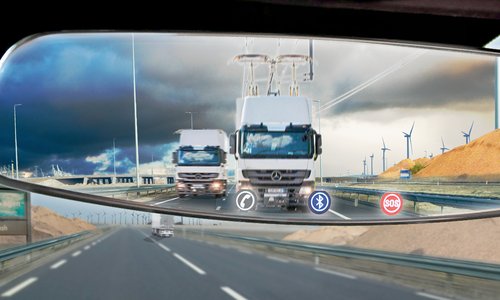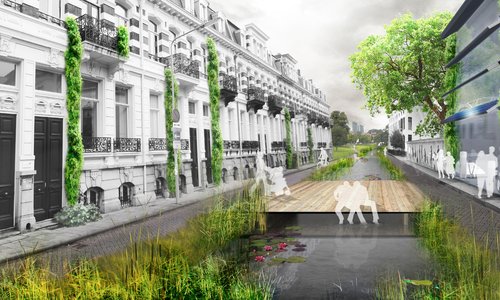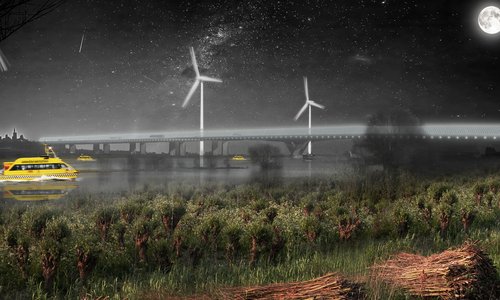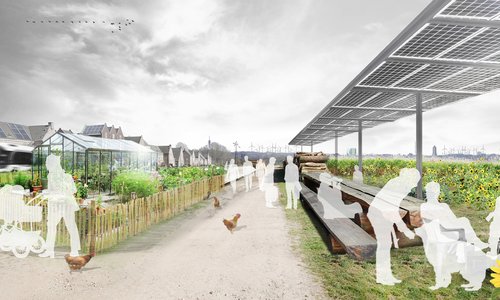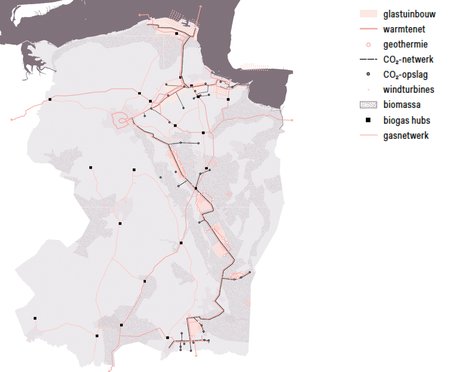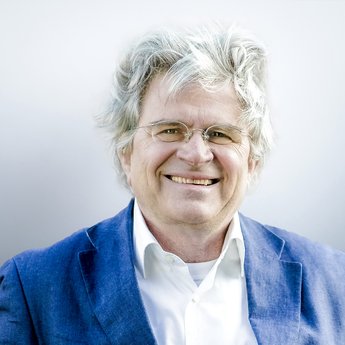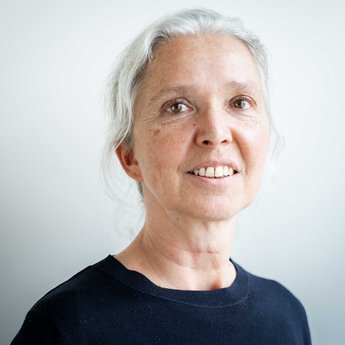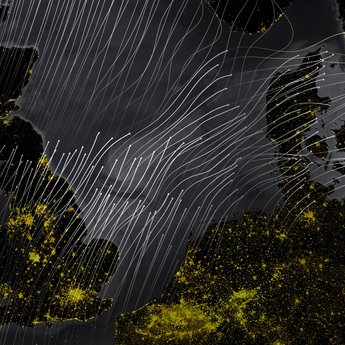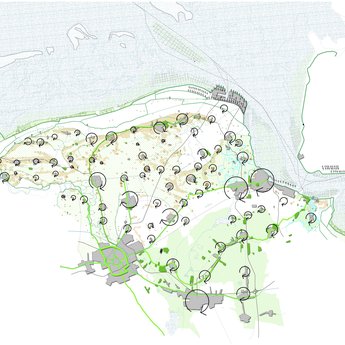Prohibition on discharge of residual heat
One example proposed in the book is - due to a prohibition on discharge of residual heat - industries will (have to) invest in heat networks, and create thermal discharge into these networks. The built environment is connected to these networks, utilising the otherwise wasted residual heat. In a later phase geothermal heat sources can be connected to the heat infrastructure.
Energy cycles
A key design challenge is to explore means for renewable energy transition on the small scale, such as for individual villages. For example, if a village wants to independently meet its renewable energy needs, it will need to closely analyse and harvest the renewable energy potential from the natural landscape, and also redesign and convert existing structures to maximise energy output. For example, by redesigning large barns and commercial buildings to include solar panels or other energy saving and producing strategies, and by using a local wind turbine for electricity. Residues from agricultural production and landscape can provide heat. Thus, human society and environment can combine to create a series of relatively small-scale, rural energy landscapes.
